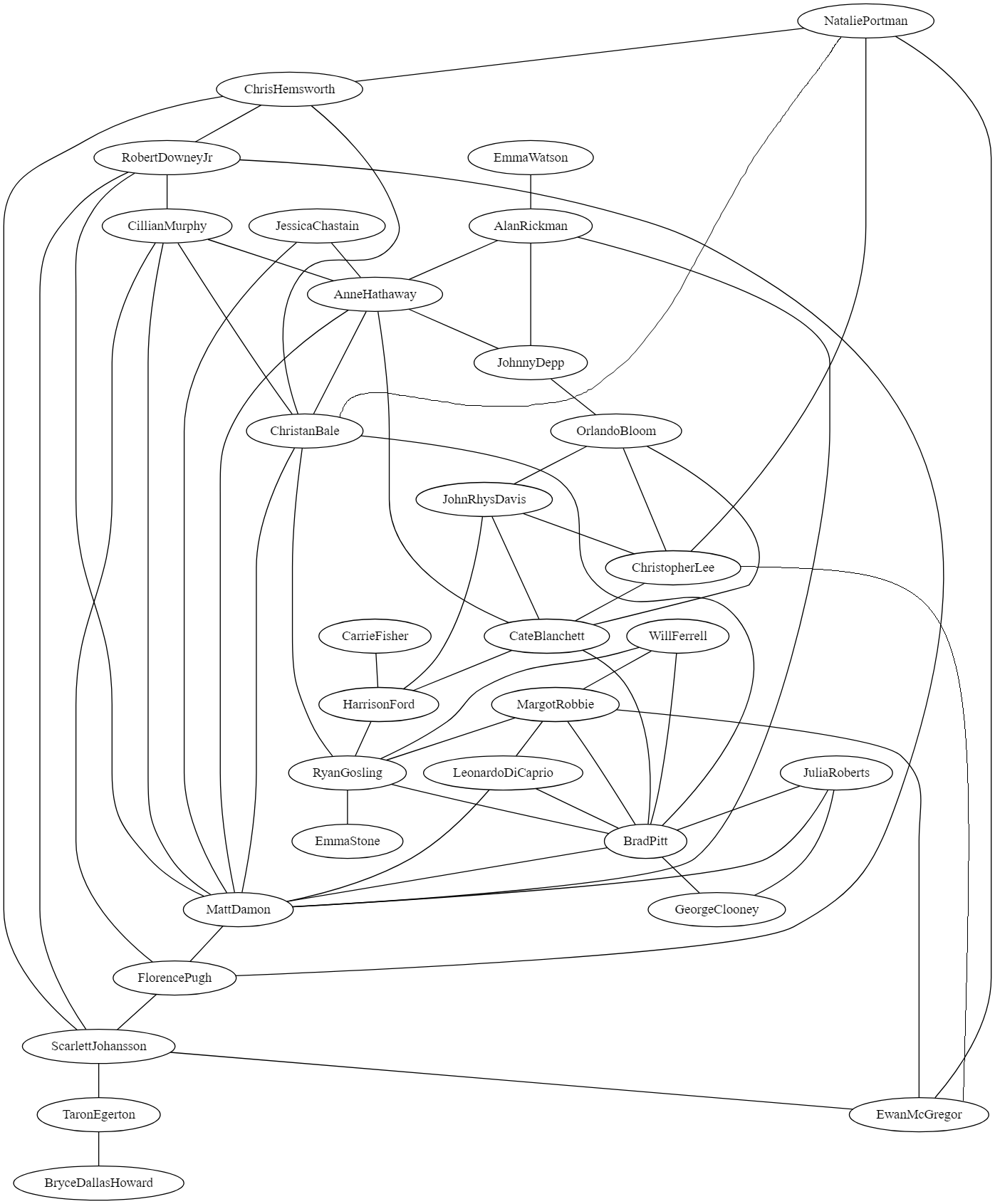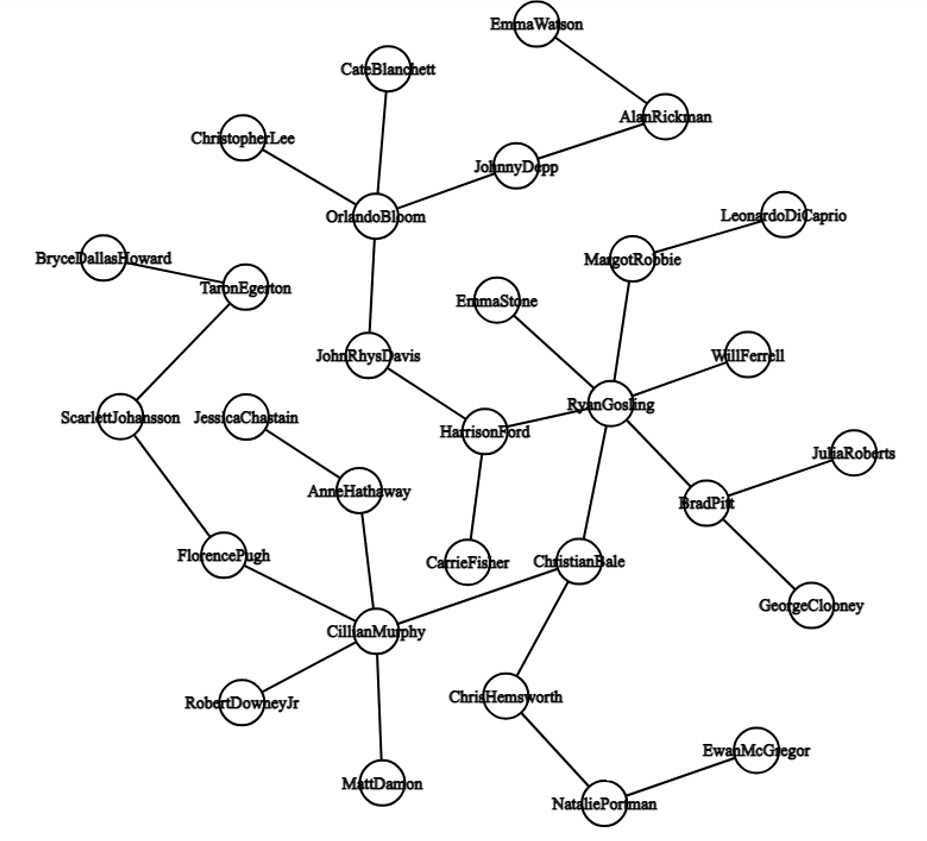| Your program has menu that loops and asks for user input |
5 |
| An undirected graph (adjacency list) is properly created from the input file |
20 |
| Menu option #1 computes a valid, optimal minimum spanning tree, and the unique movies of the MST |
20 |
| Menu option #2 computes a valid, optimal (shortest) path from one actor to another |
20 |
| Menu option #2 identifies that there is not a path if the user provides an actor that does not exists |
5 |
| Menu option #3 Finds the longest path in the MST correctly |
20 |
| Your code follows good style and readability practices |
10 |

